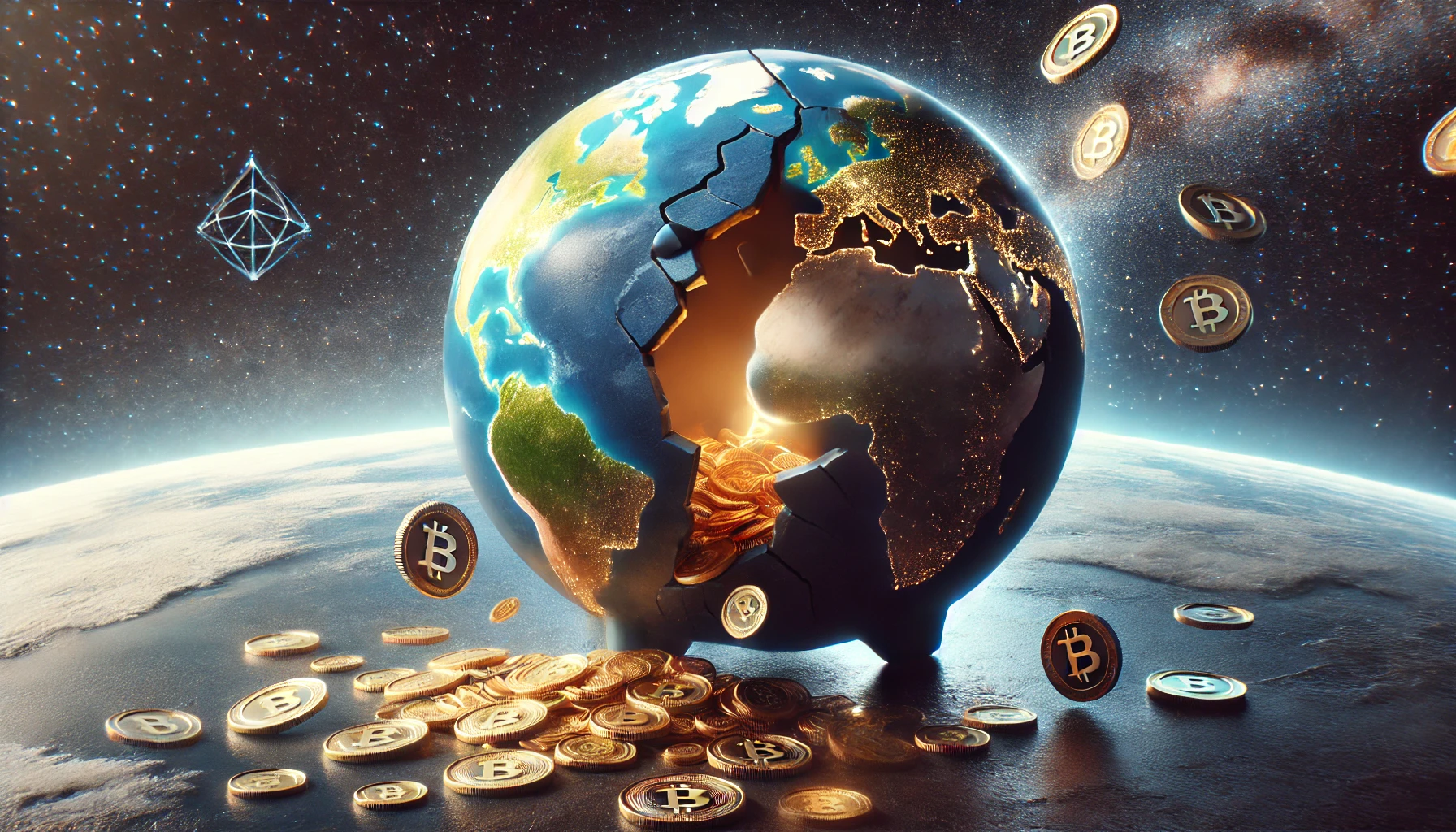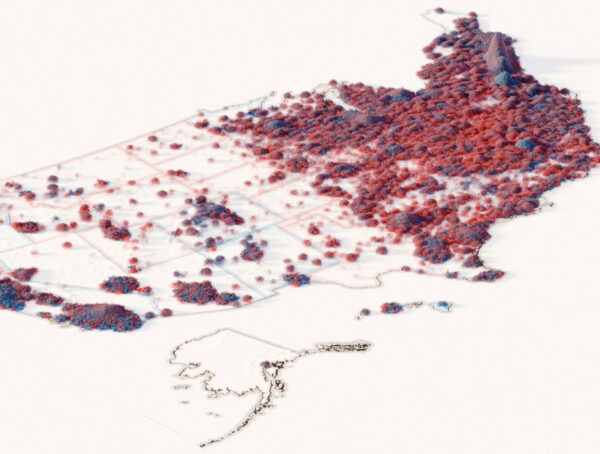TLDR Summary
Money is a multifaceted phenomenon influencing psychology, society, and the environment. From its historical evolution in barter and commodity systems to the digital age and cryptocurrencies, it reflects collective trust and shapes socio-economic realities. Understanding its complexities helps us navigate inequality, innovation, and sustainability for a fairer financial future. Money’s evolution reflects humanity’s capacity for innovation. Building equitable, sustainable systems requires balancing progress with fairness and ecological responsibility.
Psychological and Cultural Impact
- Shapes behavior, ethics, and identity, driving self-interest and societal values.
- Money’s value depends on collective belief (Tinkerbell Effect).
Historical Evolution
- Began with barter and commodity money; transitioned to paper and fiat systems.
- Enabled complex economies but introduced inflation risks.
Digital Revolution and Cryptocurrencies
- Blockchain offers decentralization and transparency (e.g., Bitcoin).
- Raises regulatory, fraud, and environmental challenges.
Socio-Economic and Environmental Effects
- Wealth inequality and global economic interconnectivity highlight systemic disparities.
- Money supply (M1, M2, M3) guides inflation and growth policies.
- Cryptocurrency and physical currency production impact the environment.
Have you ever stopped to wonder what money really is? Beyond the coins jangling in your pocket or the numbers flickering on a screen, currency is a concept that has evolved alongside human civilization, shaping and being shaped by our collective journey. Today, we’re going to peel back the layers of currency, exploring its psychological grip on us, its historical evolution, the digital transformation reshaping it, the socio-economic ripples it creates, the intricate measurements of money supply, and even the environmental footprints it leaves behind.
The Psychological Realm of Currency
Let’s start with a thought experiment. Imagine finding a suitcase filled with a million dollars. How does that make you feel? Excited? Anxious? Empowered? Money isn’t just paper or metal; it’s a powerful symbol embedded deep within our psyche.
Psychologists and behavioral economists have long studied how money affects human behavior. One fascinating study involved participants playing the “Dictator Game,” where one person decides how to split a sum of money with a stranger. Interestingly, the mere presence of money led to less altruistic decisions. Participants primed with images of cash were less likely to share, highlighting how money can trigger self-interest.
Philosopher Slavoj Žižek sees money as a universal language, enabling trade and understanding across cultures. Unlike spoken languages, it’s universally recognized as a symbol of value, bridging global gaps seamlessly.
Money also influences our sense of identity and self-worth. In societies where wealth is equated with success, individuals often tie their personal value to their financial status. This can lead to a relentless pursuit of wealth, sometimes at the expense of relationships and well-being. The “hedonic treadmill” effect describes how people quickly adapt to higher income levels, leading to no lasting increase in happiness.
Moreover, money can impact our ethical decisions. In experiments where participants could cheat to earn more money, a significant number did so, suggesting that the lure of financial gain can override moral considerations. This raises important questions about how monetary incentives shape corporate behavior and ethical standards in society.
Historical Evolution of Currency
To truly understand money, we need to travel back in time. Early human societies relied on barter systems, exchanging goods like livestock, grains, or crafts. But barter had its limitations—what if you had cows but needed shoes, and the shoemaker didn’t want cows?
Enter commodity money. Societies began using objects with intrinsic value, such as gold, silver, or even cowrie shells, as a medium of exchange. These commodities were durable, divisible, and universally desired, solving many barter problems.
One of the most significant leaps was the invention of paper money in ancient China during the Tang Dynasty. Merchants issued promissory notes as a stand-in for heavy coins, which eventually gained government backing. This innovation allowed for easier trade over long distances and paved the way for modern banking.
Anthropologist David Graeber argued that debt predates money, with early societies recording obligations informally instead of using physical currency. Money later evolved as a way to quantify and standardize these social debts.
The adoption of representational money—where the physical token represents a value guaranteed by an authority—enabled complex economic systems. Governments could now control the money supply, influencing economies on a grand scale. The transition to fiat currency, where money’s value isn’t backed by physical commodities but by government decree, marked a pivotal moment. It allowed for greater flexibility in monetary policy but also introduced challenges like inflation control.
Measuring Money: M1, M2, and M3
Understanding how much money is circulating in an economy is crucial for policymakers, economists, and financial institutions. This brings us to the concepts of M1, M2, and M3—key indicators used to measure the money supply.
- M1 represents the most liquid forms of money. It includes physical currency in circulation (coins and notes), demand deposits, traveler’s checks, and other checkable deposits. Essentially, M1 is money that can be quickly and easily used for transactions.
- M2 includes all of M1, plus less liquid forms of money. This encompasses savings deposits, money market mutual funds, and small-denomination time deposits (like certificates of deposit under $100,000). M2 represents money that can be converted into cash relatively easily.
- M3 expands on M2 by adding large time deposits, institutional money market funds, short-term repurchase agreements, and larger liquid assets. M3 includes money that is less liquid and not as easily used for transactions but still plays a significant role in the economy.

These classifications help central banks and governments understand the different layers of money circulating in the economy. By monitoring M1, M2, and M3, policymakers can make informed decisions about interest rates, inflation control, and economic growth strategies. For instance, an increase in M1 might signal higher consumer spending, while changes in M3 could indicate shifts in long-term investment behavior. M1 includes the most liquid forms of money—cash and checking deposits—and it amounts to about $5.8 trillion. Then there’s M2, which adds savings deposits and small time deposits to M1, bringing the total to roughly $21.2 trillion. But it doesn’t stop there. Estimated M3 takes M2 and includes even larger, less liquid assets like large time deposits and institutional money market funds, totaling an astounding $26.5 trillion. That’s a lot of zeros! But what do these enormous figures actually mean for our economy and for us? Let’s explore.
Understanding these measures also highlights how complex our financial systems have become. Money isn’t just cash in hand; it’s a vast network of assets and instruments that together drive economic activity.
The Tinkerbell Effect and the Value of Money
The Tinkerbell Effect describes how certain things exist or hold value only because people believe in them. This concept explains the value of money, which relies entirely on collective trust. Without widespread belief in its worth, money—whether paper bills, digital currencies, or coins—loses its power.
Examples highlight how belief shapes outcomes:
- Money’s Value: Fiat currency has no intrinsic worth; its value depends on trust in the government issuing it. If this trust falters, as seen in Zimbabwe’s hyperinflation, the currency collapses.
- Cryptocurrencies: Bitcoin’s worth relies on belief in its scarcity, utility, and decentralization. Without faith in these principles, it would hold no value.
- “Every Vote Matters”: The belief that each vote contributes to democracy keeps people voting. If people stopped believing this, voter turnout would drop, threatening democratic systems.
- Driving Safety: Driving is perceived as safe due to laws and norms. When drivers relax this belief—becoming complacent about seatbelts or speed limits—the reality changes, and accidents increase.

Similarly, money’s value persists only as long as we believe in its ability to function as a store of value and medium of exchange. Like Tinkerbell, its existence depends on our collective faith.
The Digital Revolution and Cryptocurrencies
Fast forward to the 21st century, and money is undergoing another transformation. The rise of digital technology has given birth to cryptocurrencies like Bitcoin and Ethereum, fundamentally challenging traditional financial systems.
Cryptocurrencies operate on blockchain technology—a decentralized ledger maintained by a network of computers worldwide. This system eliminates the need for central authorities like banks or governments to validate transactions. Proponents argue that this decentralization increases transparency, reduces corruption, and empowers individuals.
Today, most money exists digitally, raising questions about its reality. With only database entries or cryptocurrency tokens representing trillions of dollars, this abstraction challenges traditional ideas of trust and value.
Bitcoin, created in 2009 by the mysterious Satoshi Nakamoto, was the first cryptocurrency to gain widespread attention. Its limited supply mimics gold’s scarcity, appealing to those concerned about fiat currency inflation. Ethereum expanded on Bitcoin’s concepts by introducing smart contracts, programmable transactions that execute automatically when conditions are met.
However, cryptocurrencies also raise significant questions. Without central regulation, issues like fraud, market manipulation, and extreme volatility become prominent. Governments grapple with how to regulate these new forms of money without stifling innovation. Moreover, the anonymity provided by some cryptocurrencies has been linked to illicit activities, posing ethical and legal challenges.

The digital revolution extends beyond cryptocurrencies. Mobile payment platforms, online banking, and digital wallets are transforming how we interact with money daily. In some countries, cash transactions are becoming rare, highlighting a shift towards a cashless society.
This digital shift also affects traditional measures of money supply like M1, M2, and M3. As more transactions occur electronically, central banks must adapt their monitoring and regulatory practices to account for digital currencies and new forms of financial assets.
Socio-Economic Implications and Wealth Distribution
While money can drive progress, it also reflects and amplifies socio-economic inequalities. Today, the wealth gap is a pressing global issue. According to a report by Oxfam, the world’s richest 1% own more than twice as much wealth as 6.9 billion people combined.
This concentration of wealth affects social mobility—the ability for individuals to improve their economic status. In societies with high inequality, access to quality education, healthcare, and opportunities is often tied to wealth, perpetuating cycles of poverty.
Fiat money is unlimited, as central banks can create it as needed. While this helps stabilize economies in crises, it raises questions about inflation, scarcity, and how money retains value if its supply is endless.
Taxation and social welfare policies are tools governments use to address these disparities. Progressive tax systems aim to redistribute wealth more equitably, while social programs provide safety nets for the vulnerable. However, globalization and the mobility of capital complicate these efforts. Wealth can be shifted across borders, and multinational corporations can exploit tax havens, reducing their contributions to the societies they operate in.
Financial markets’ interconnectedness means economic crises can have global repercussions. The 2008 financial crisis, triggered by the collapse of the U.S. housing market, led to worldwide economic downturns, affecting millions. This event highlighted the need for robust financial regulation and ethical practices within the banking sector.
Moreover, the rise of automation and artificial intelligence poses new challenges. As technology displaces certain jobs, wealth generated by increased productivity may not be evenly distributed, potentially widening the wealth gap further.

Understanding money supply measures like M1, M2, and M3 becomes even more critical in this context. Central banks use these indicators to implement monetary policies aimed at stabilizing the economy, controlling inflation, and promoting employment. For example, by influencing interest rates and adjusting reserve requirements, central banks can affect how much money banks can lend, impacting economic growth and wealth distribution.
Environmental Considerations of Currency Production
Money doesn’t just impact societies; it affects our planet. The production of physical currency consumes significant resources. For instance, the U.S. Bureau of Engraving and Printing uses thousands of tons of ink and specialized paper annually. Mining metals for coins depletes natural resources and often involves environmentally damaging practices.
Digital currencies, while reducing the need for physical cash, have their own environmental costs. Cryptocurrency mining, particularly for Bitcoin, is energy-intensive. Miners solve complex mathematical problems to validate transactions, a process that consumes vast amounts of electricity. Some estimates suggest that Bitcoin’s annual energy consumption rivals that of entire countries like Argentina.
Money can be seen as stored energy, representing the human effort, time, and resources used to create goods and services. It allows this energy to be transferred, making it not just a medium of exchange but a mechanism for redistributing human potential.
This energy usage often relies on fossil fuels, contributing to carbon emissions and climate change. The environmental impact has spurred discussions about transitioning to more energy-efficient consensus mechanisms, like Proof of Stake, used by some newer cryptocurrencies.
Sustainability initiatives are emerging within the financial sector. Green bonds fund environmental projects, and some banks are incorporating environmental, social, and governance (ESG) criteria into their investment strategies. These efforts reflect a growing recognition of the financial system’s role in promoting environmental stewardship.
The move towards digital transactions also has environmental implications. While reducing the need for physical currency production, increased reliance on electronic systems demands robust data centers and infrastructure, which consume energy. Balancing technological advancement with environmental sustainability is a challenge that requires innovative solutions.
Conclusion: A Multifaceted Exploration
Our journey through the layers of currency reveals a complex and ever-evolving narrative. Money is far more than a medium of exchange; it’s a psychological influencer, a historical artifact, a technological frontier, a socio-economic force, an intricate system measured by M1, M2, and M3, and an environmental consideration.
Understanding the psychological impact of money helps us navigate our own behaviors and societal values. Reflecting on the historical evolution of currency shows us how innovation can drive progress but also bring new challenges. Embracing the digital revolution requires balancing technological benefits with ethical and regulatory considerations. Addressing socio-economic implications demands concerted efforts to promote fairness and opportunity. Acknowledging environmental impacts pushes us toward sustainable practices.
The UK uses M4 as an additional measure, which includes M3 components and broader money circulating within the economy.
Measuring money through M1, M2, and M3 provides vital insights into economic health and guides monetary policy. These metrics remind us that money isn’t just about cash or credit; it’s a complex system influencing every aspect of our lives.
As we stand on the cusp of further financial transformations, perhaps involving quantum computing or new forms of digital assets, it’s crucial to approach currency not just as an economic tool but as a multifaceted phenomenon intertwined with every aspect of human life.
By deepening our understanding of money’s many dimensions, we can work towards financial systems that not only drive economic growth but also enhance social equity, protect our planet, and reflect the best of human innovation and cooperation. The future of money is not just about wealth—it’s about the kind of world we want to build together.
More from Finance
Why the ‘Racism’ Excuse for Kamala’s Loss Falls Apart
Let’s get one thing straight: Kamala Harris didn’t lose the 2024 election because of racism, misogyny, or some other well-worn …
The Facebook Fraud: How ‘Likes’ Are Manipulating Your Feed
Social media platforms like Facebook aren’t just for sharing memes or catching up with friends—they’ve become critical tools for shaping …


















